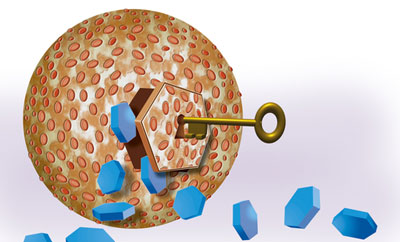FDA approves first-in-class Glyxambi(R) (empagliflozin/linagliptin) tablets for adults with type 2 diabetes
Posted: 3 February 2015 |
The U.S. FDA has approved Glyxambi® (empagliflozin/linagliptin) tablets, from Boehringer Ingelheim Pharmaceuticals and Eli Lilly and Company, as an adjunct to diet and exercise to improve glycemic control in adults with type 2 diabetes (T2D) when both empagliflozin and linagliptin are appropriate treatments…


GLYXAMBI is not recommended in patients with type 1 diabetes or for the treatment of diabetic ketoacidosis. GLYXAMBI has not been studied in patients with a history of pancreatitis, and it is unknown if using GLYXAMBI increases the risk of developing pancreatitis in these patients.
GLYXAMBI is the first and only diabetes treatment in the U.S. to combine the dual mechanisms of action of a sodium glucose co-transporter-2 (SGLT2) inhibitor and a dipeptidyl peptidase-4 (DPP-4) inhibitor in a once-daily tablet taken in the morning. GLYXAMBI combines 10 mg or 25 mg of empagliflozin with 5 mg of linagliptin. SGLT2 inhibitors remove glucose through the urine by blocking blood glucose re-absorption in the kidney. DPP-4 inhibitors work by increasing hormones that stimulate the pancreas to produce more insulin and stimulate the liver to produce less glucose.
“Today’s medical community recognizes the need to treat type 2 diabetes from multiple fronts to help patients improve glycemic control,” said Paul Fonteyne, president and CEO, BIPI. “With GLYXAMBI, the dual inhibition of DPP-4 and SGLT2 — two proven targets in the treatment of type 2 diabetes — now provides U.S. physicians and patients with an option to simultaneously address multiple pathways to improve glycemic control. For patients uncontrolled on metformin, phase III trial results showed GLYXAMBI provided significantly greater reductions in blood glucose levels compared with either empagliflozin or linagliptin alone.”
GLYXAMBI should not be taken by patients with severe renal impairment, end-stage renal disease or dialysis; a history of hypersensitivity reaction to linagliptin, such as anaphylaxis, angioedema, exfoliative skin conditions, urticaria, or bronchial hyperreactivity; or history of serious hypersensitivity reaction to empagliflozin. There have been postmarketing reports of acute pancreatitis, including fatal pancreatitis, in patients taking linagliptin, a component of GLYXAMBI. Take careful notice of potential signs and symptoms of pancreatitis. If pancreatitis is suspected, promptly discontinue GLYXAMBI and initiate appropriate management. It is unknown whether patients with a history of pancreatitis are at increased risk for the development of pancreatitis while using GLYXAMBI.
“Half of people with type 2 diabetes do not achieve recommended blood sugar control, making new treatment options more important than ever,” said Mike Mason, vice president, U.S., Lilly Diabetes. “The approval of GLYXAMBI gives U.S. physicians and patients a first-in-class prescription medicine to help manage this condition. The approval is also a testament to our alliance’s commitment to adults living with type 2 diabetes.”



